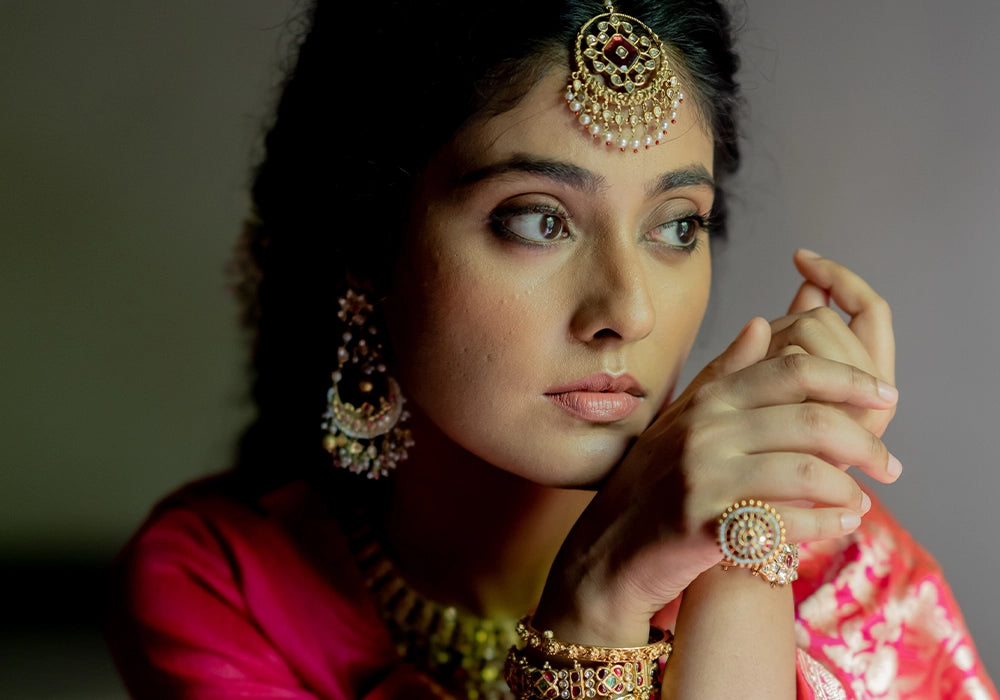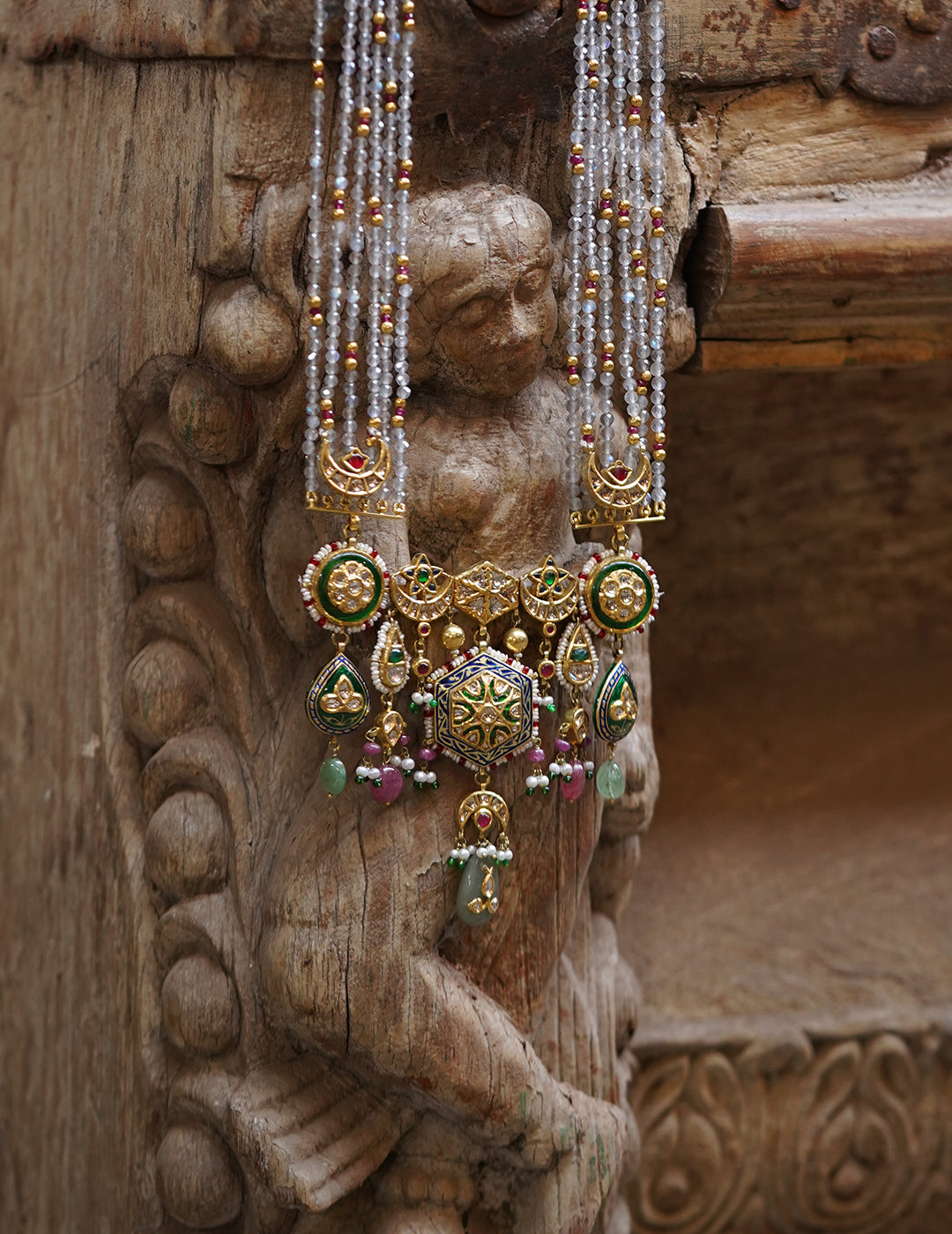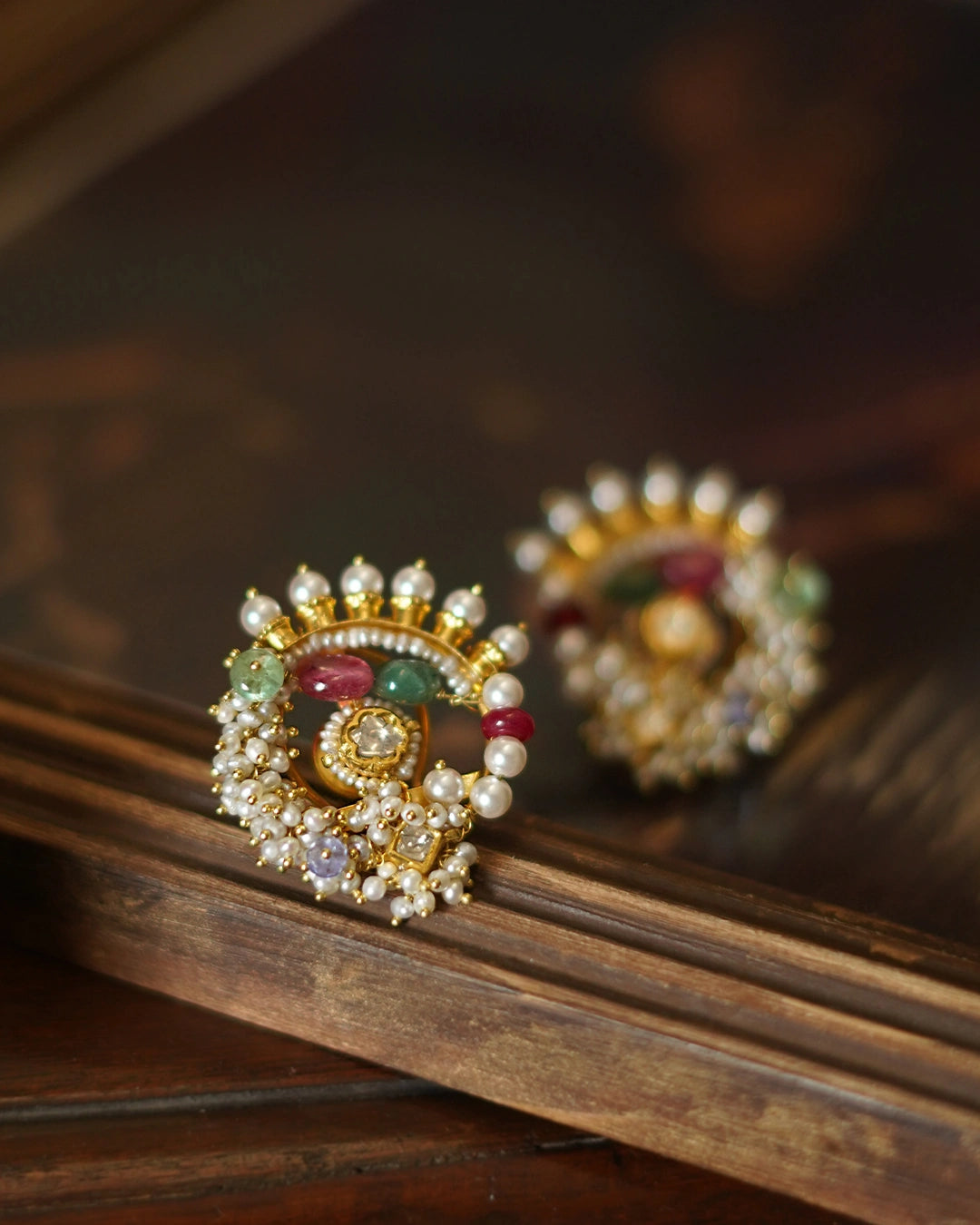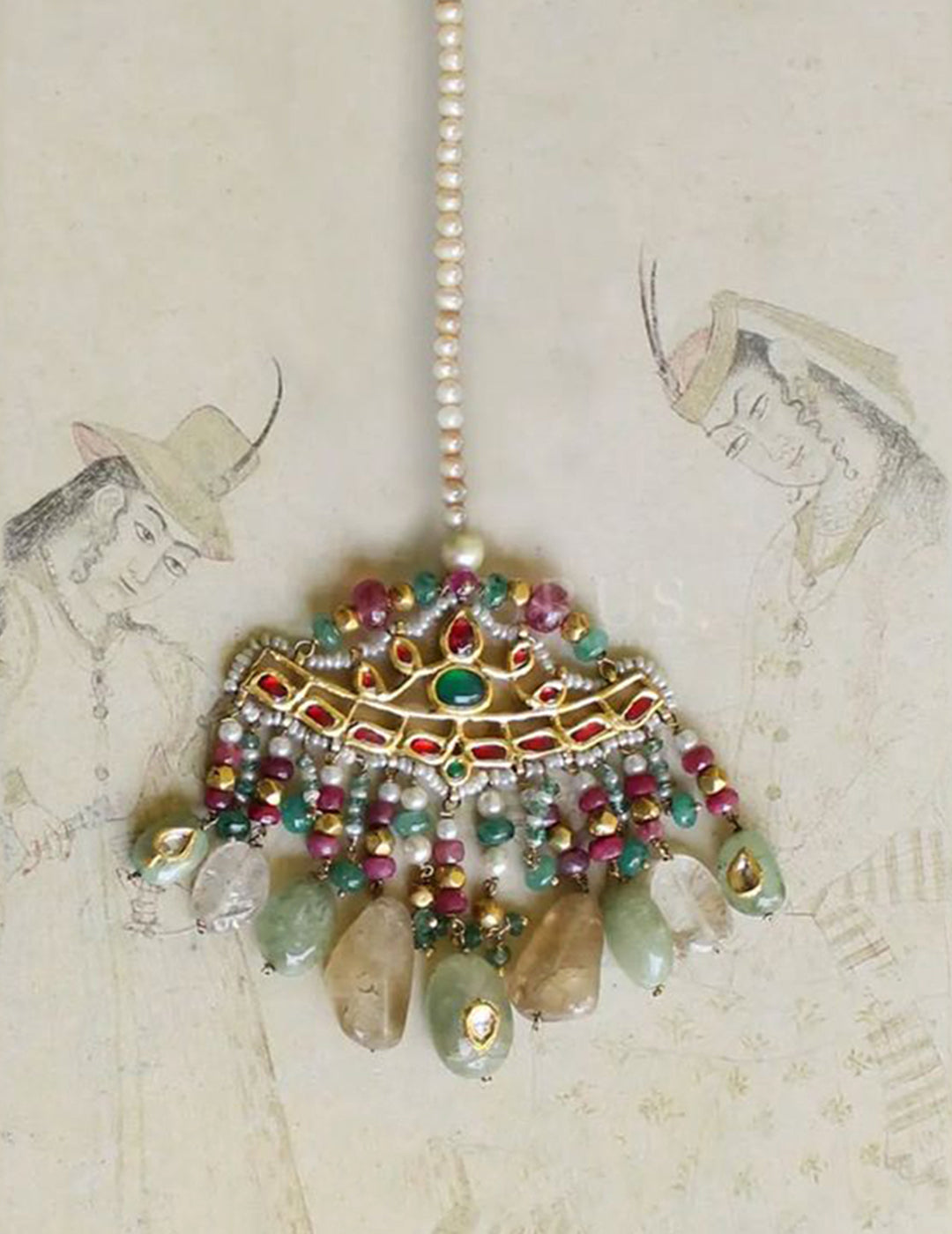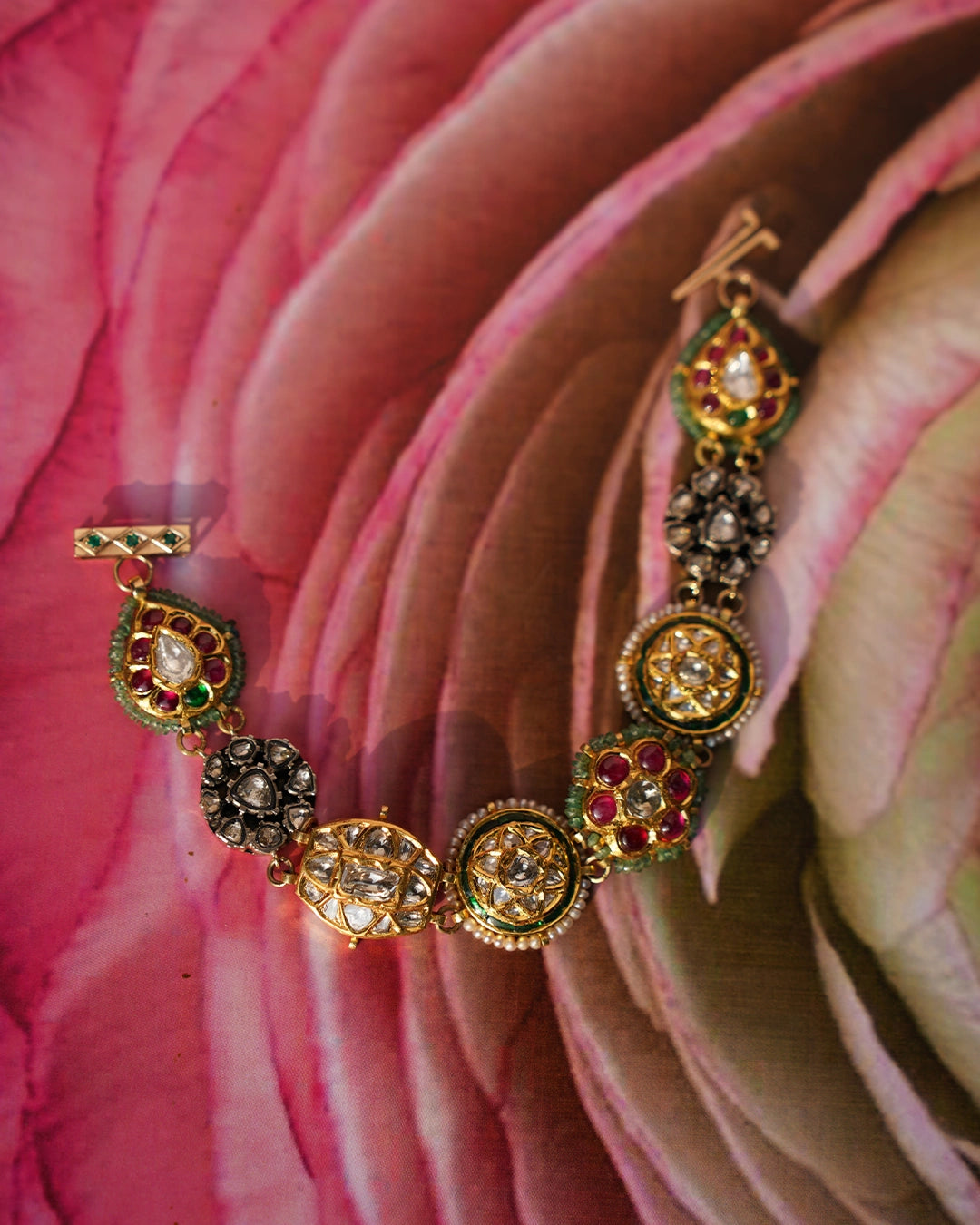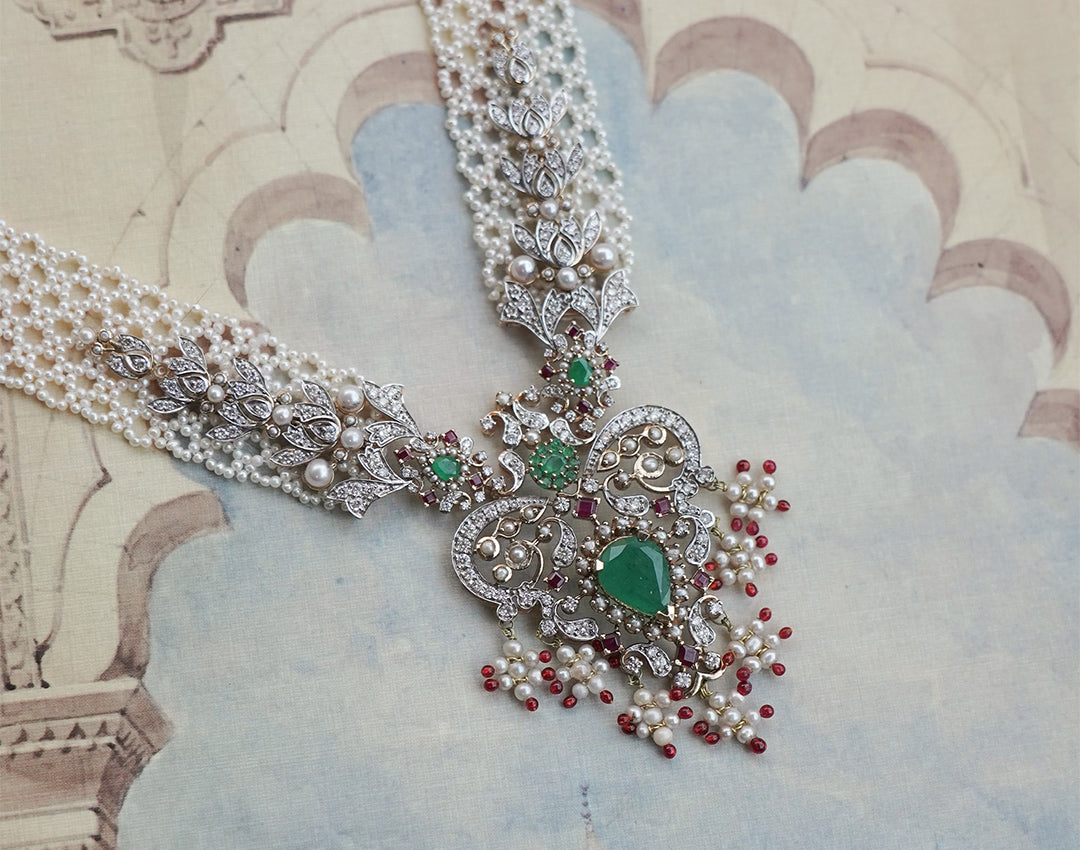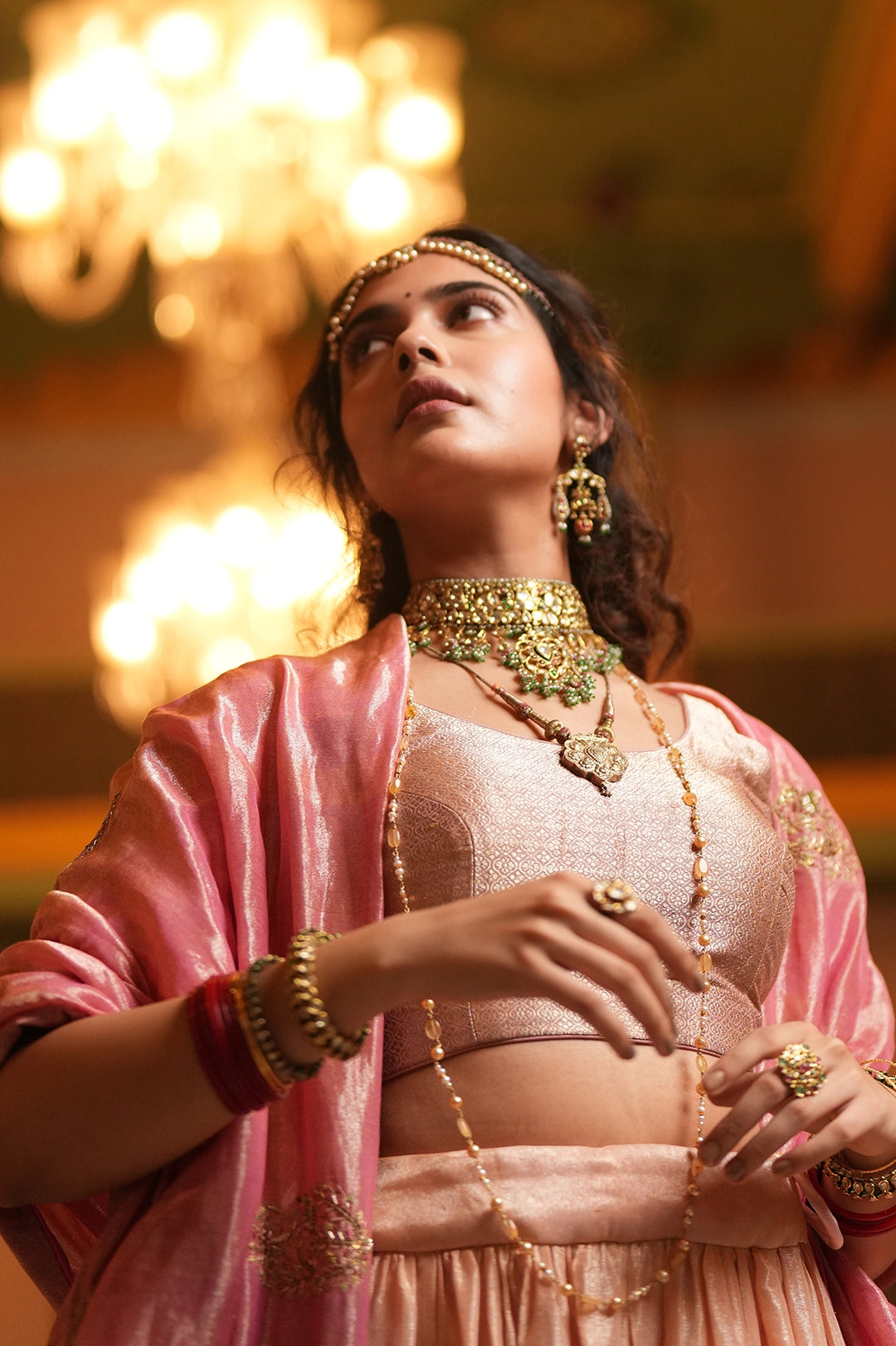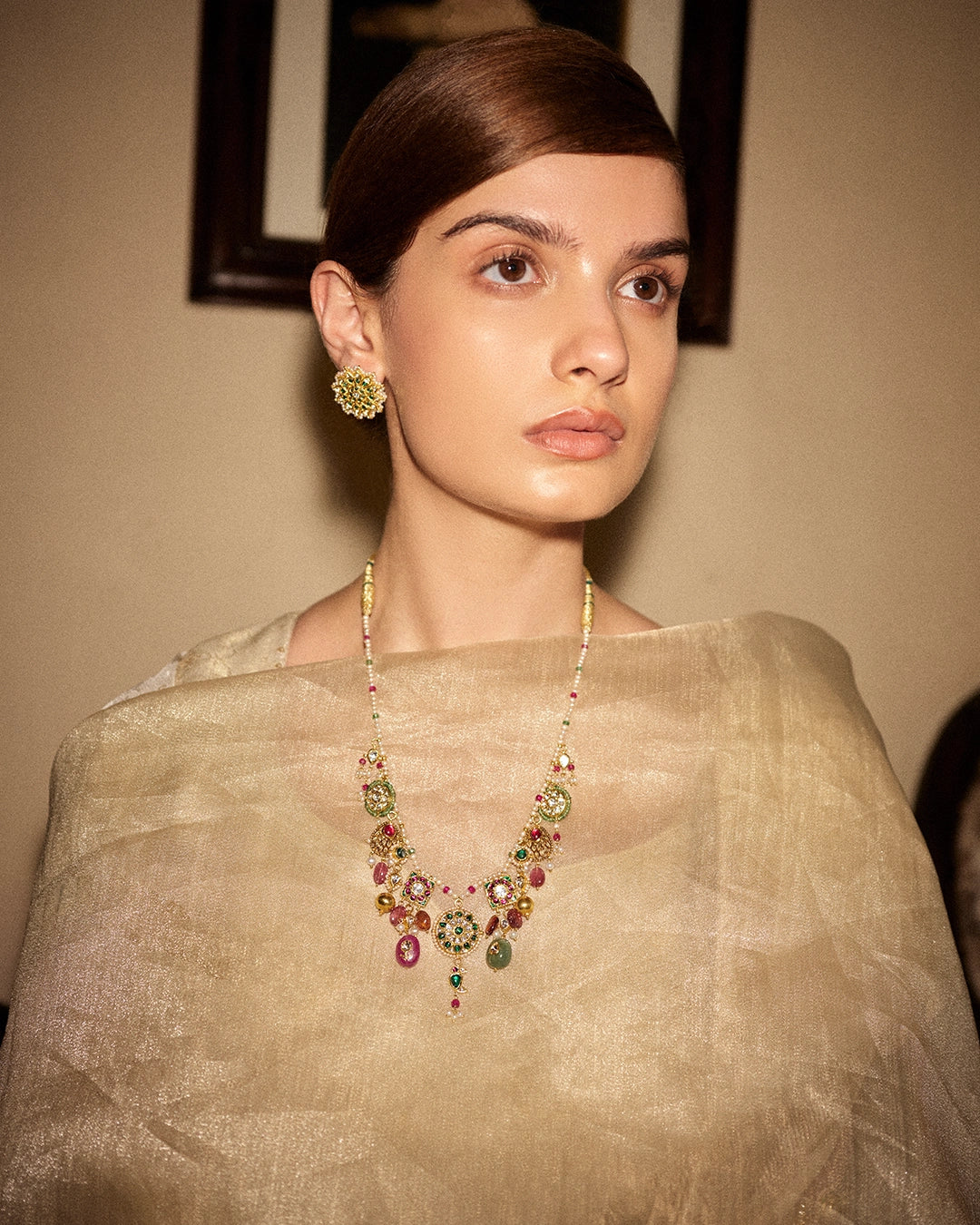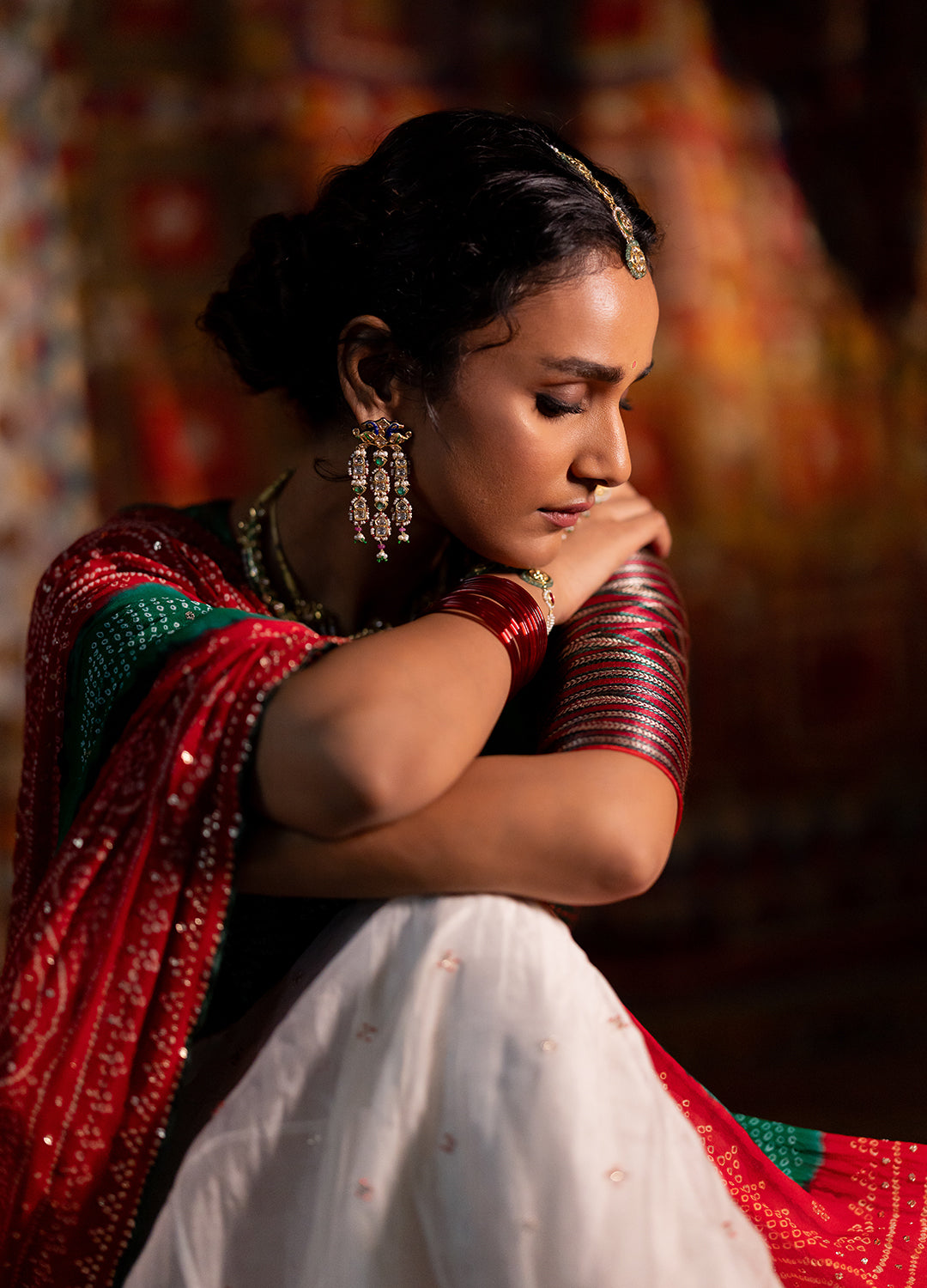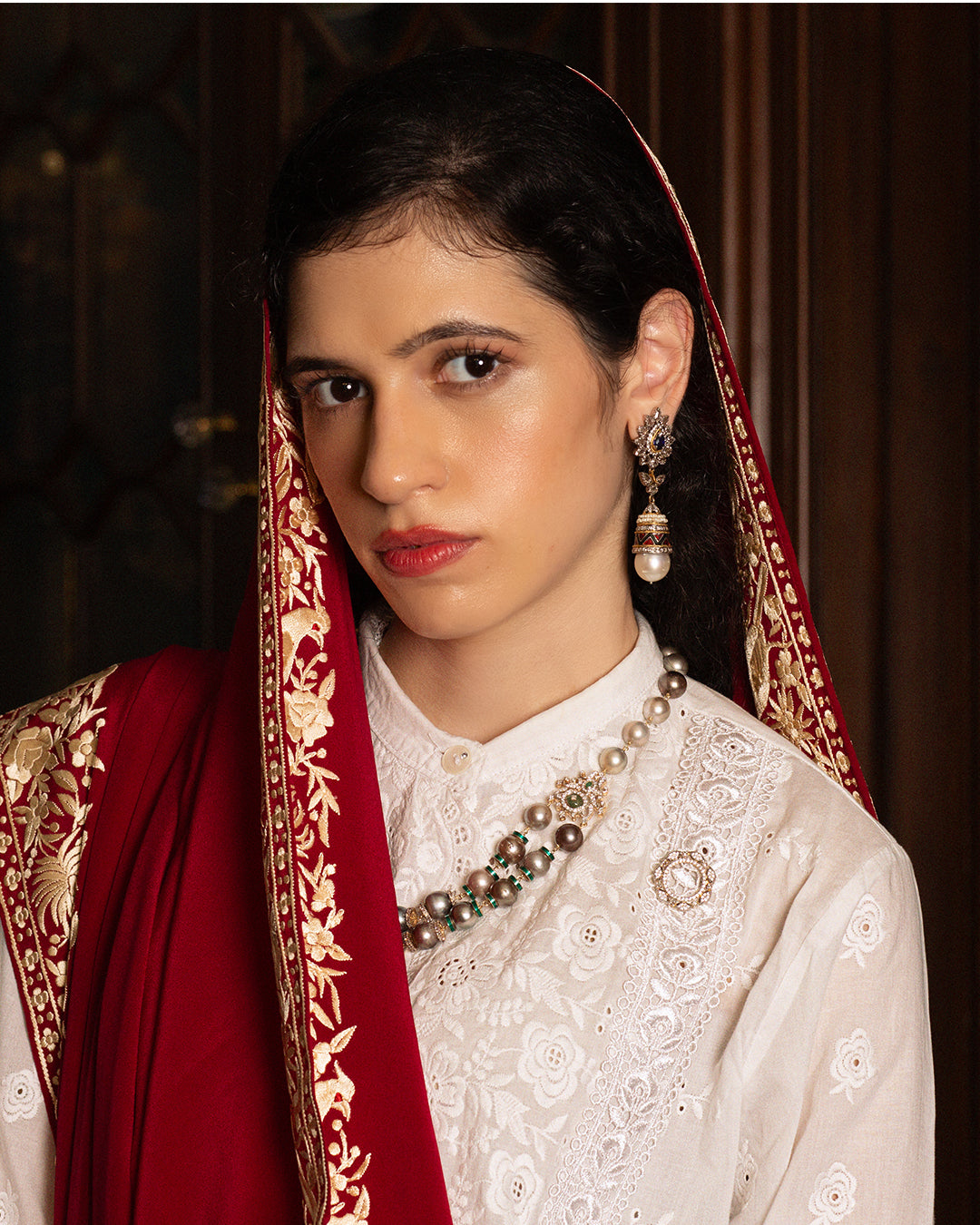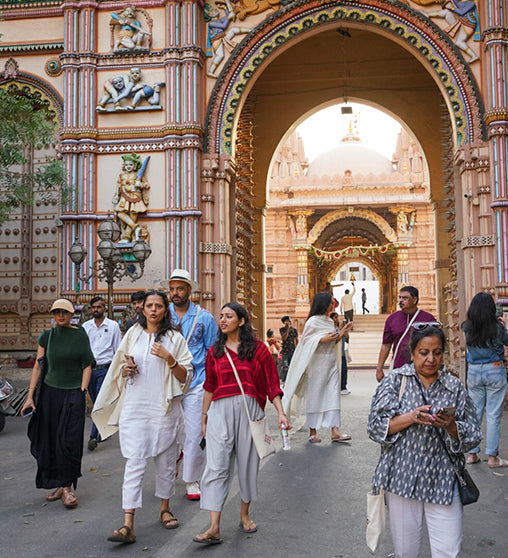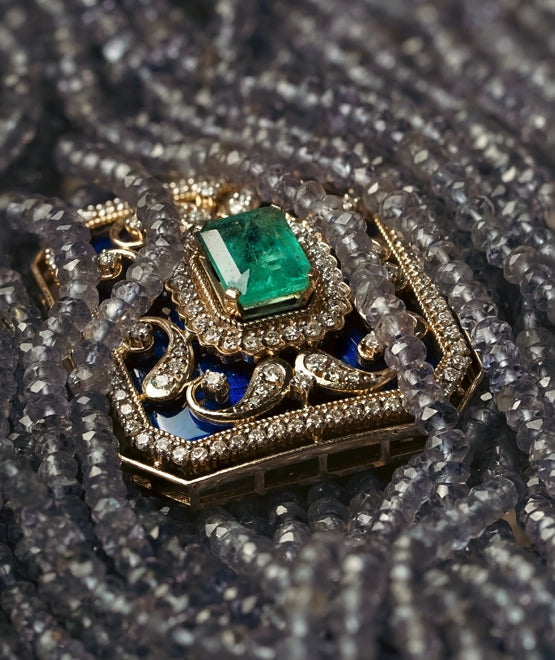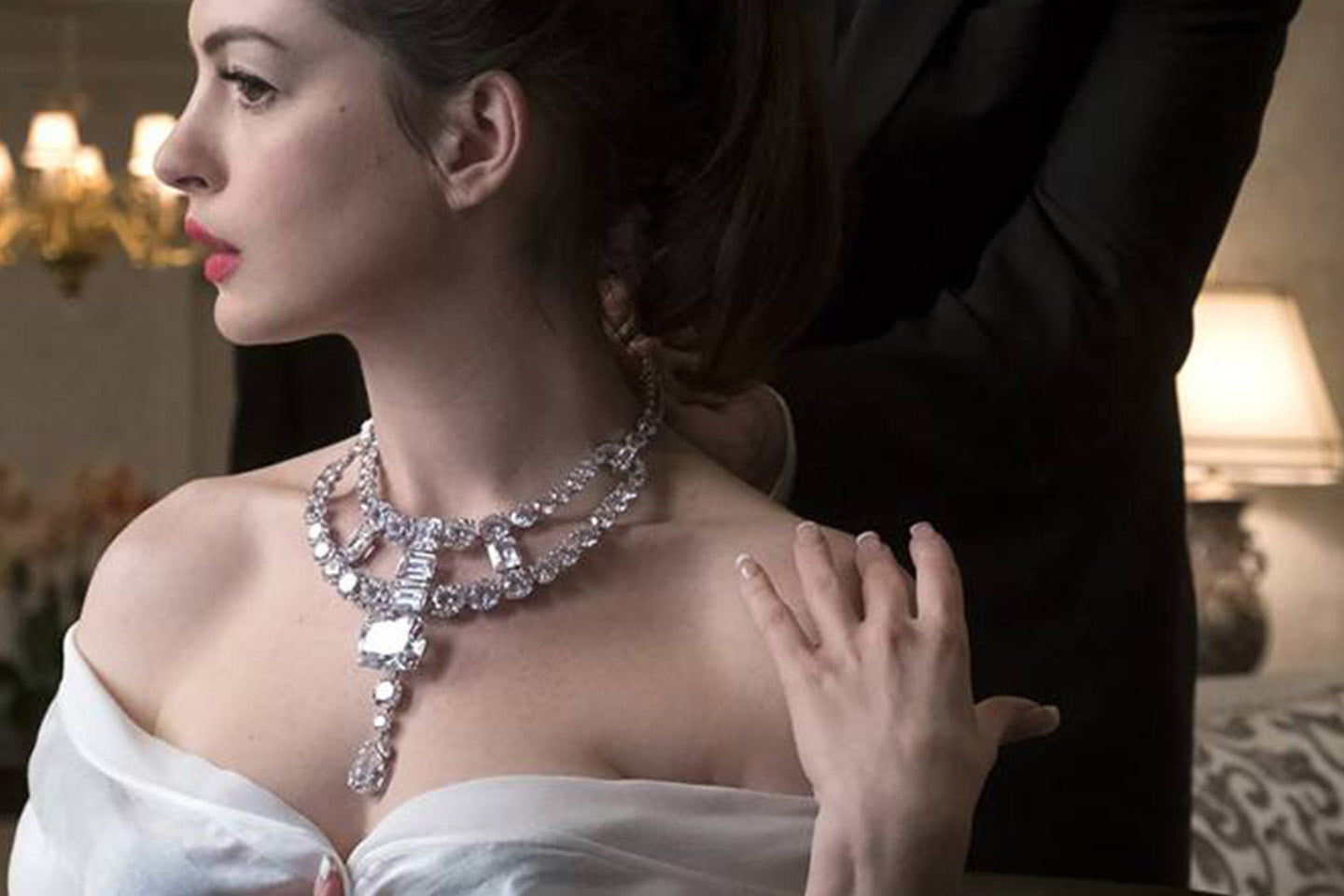
A Belle epoque diamond Jigha, Nawanagar, Gujarat
The turban ornament set with old, baguette, and pear-shaped diamonds, white gold, fitted with plume holder on the reverse, lower portion detachable and may be worn as a brooch. Image courtesy - Christie’s, New York
The turban ornament set with old, baguette, and pear-shaped diamonds, white gold, fitted with plume holder on the reverse, lower portion detachable and may be worn as a brooch. Image courtesy - Christie’s, New York
.
On the eve of the momentous Christie’s auction of the al Thani jewels, titled “Maharajas and the Mughal Magnificence” - I made a trip to New York to catch a final glimpse of the entire collection, before the pieces were dispersed, each making its way to a new home in different parts of the world. The collection of jewelry was unparalleled and I will be talking about it in detail on a separate blog (Coming Soon!)
An interesting observation that I made here while looking at the pieces was the fact that jewelry, that is mostly a woman’s prerogative in today’s time, is majorly contradicted here. More than 85% of the jewelry in the exhibit belonged to and was worn by men.
I was intrigued by a magnificent sarpench (image above) whose provenance stated that it belonged to the Maharaja of Nawanagar (present day Jamnagar, Gujarat) and since I come from Gujarat, I delved deeper into the Nawanagar jewels to know more. The beginning of the twentieth century saw a great deal of interest generated by the Indian maharajas for all things European, and this was particularly seen for jewelry. It also coincided with the visit of Jacques Cartier to India. I stumbled upon a range of rare jewels that were commissioned by Maharaja Ranjitsinh and Maharaja Digvijaysinh of Nawanagar with Cartier.
.

The Maharaja of Nawanagar wearing the Cartier diamond necklace
.
And that is where I stumbled upon the story of the Nawanagar necklace. Made in 1931, the Nawanagar necklace finds a prominent place in the catalogue of India’s finest jewels through history. The princely state of Nawanagar (present-day Jamnagar, made famous by the Reliance Industries for setting up a refinery ) was ruled by the Jadeja dynasty, which claimed descent from Lord Krishna. Once a feudal backwater, Nawanagar entered a new era in 1907, with the accession of Ranjitsinghji on the throne.
Ranjitsinh, who was not only a famous cricketer but also a great administrator, multiplied the revenues of his state by developing its ports. The added revenues meant that Ranji was able to indulge in his other great passion apart from cricket, collecting rare jewels. ’ The ‘Nawanagar Jewels’ that he accumulated were described by his close friend, Jacques Cartier, as ‘unsurpassed in the world, not perhaps in quantity but certainly in quality.’
While the great jewelry collections of Hyderabad, Baroda, Indore and Kapurthala are well known in international circles, the Nawanagar collection stands out for sheer uniqueness. The pearl fisheries around Jamnagar produced natural black pearls, and the family had a rare necklace made of these. Other famous pieces they owned included an emerald necklace owned by the Ottoman Sultans, a necklace of carved emeralds, a beautiful lemon-coloured diamond known as the ‘Tiger’s eye’, and many other pieces.
.


.
Ranji was fond of colored diamonds and they were a part of the Nawanagar collection in every hue, in unprecedented numbers. There were mind-boggling pinks, blues, greens and blacks. The book ‘Cartier’ by Hans Nadelhoffer speaks of a red diamond and even a brown diamond bought by the Maharaja. These two are some of the rarest-known diamond types in the world and would command astronomical prices today.
.

Sketch of the Nawanagar Diamond necklace Image Courtesy - Cartier
.
But the most important jewel from the Nawanagar collection is the two-line diamond necklace that was created by Cartier and it is actually called the Nawanagar necklace. The necklace consisted two strands of first-class white diamonds, which were linked on both sides by a pair of square pink diamonds. The center pendant of the necklace comprised of several pink diamonds, a large 26 carat blue diamond, a 12 carat green diamond, and the famous 136 carat ‘Queen of Holland diamond’, a diamond larger than the 105 carat Kohinoor!
It was described by Jacques Cartier as “the finest cascade of coloured diamonds in the world” and “a superb realisation of a connoisseur’s dream.” The total carat count for the original necklace was approximately 500 carats.
.

Sir Digvijaysinhji Jadeja (1895-1966) Maharaja of Nawanagar holding the Nawanagar necklace Image Courtesy - Cartier
.
The exact date of completion of this extraordinary necklace is unknown. But it is said that, Ranji did not live long enough to enjoy his necklace, he passed away in 1933. It was his nephew and successor Sir Digvijaysinhji Jadeja (1895-1966) who is seen in numerous photographs wearing the necklace on state occasions. Digvijaysinhji too was a lover of jewelry and expanded the Nawanagar collection extensively.
Though the Nawanagar necklace now no longer exists, photographs of the design and its owner have been preserved in Cartier’s archives. And this very necklace (made as a replica) is featured as a silver screen centrepiece for the movie Ocean’s Eight.
This decision by Warner Brothers and Cartier to recreate the necklace gives us a real-life glimpse into how this piece might have looked, in its original. While an exact replica, the necklace used in the movie is actually a toned-down version and instead of the famed coloured diamonds used in the centre of the original piece, it contains Zirconium and is a tad smaller in dimension. And instead of using its actual name, the Nawanagar necklace-replica is termed as the “Toussaint Necklace”, after Cartier’s former creative director, Jeanne Toussaint.
The bespoke piece is the result of eight weeks’ intensive work in the Cartier high jewellery workshops in Paris. The necklace was reduced in size by 15 to 20 percent and adjusted to Anna Hathaway’s measurements as the initial dimensions were for a man. The coloured diamonds were replaced with natural zirconium oxides mounted on white gold. The bespoke piece is the result of eight weeks’ intensive work in the Cartier high jewelry workshops in Paris. To create the necklace for the film there were 10 to 15 artisans involved. As the size of the necklace was reduced, if the necklace used in the film were to exist today, it would be around 450 carats!
.
.
.
